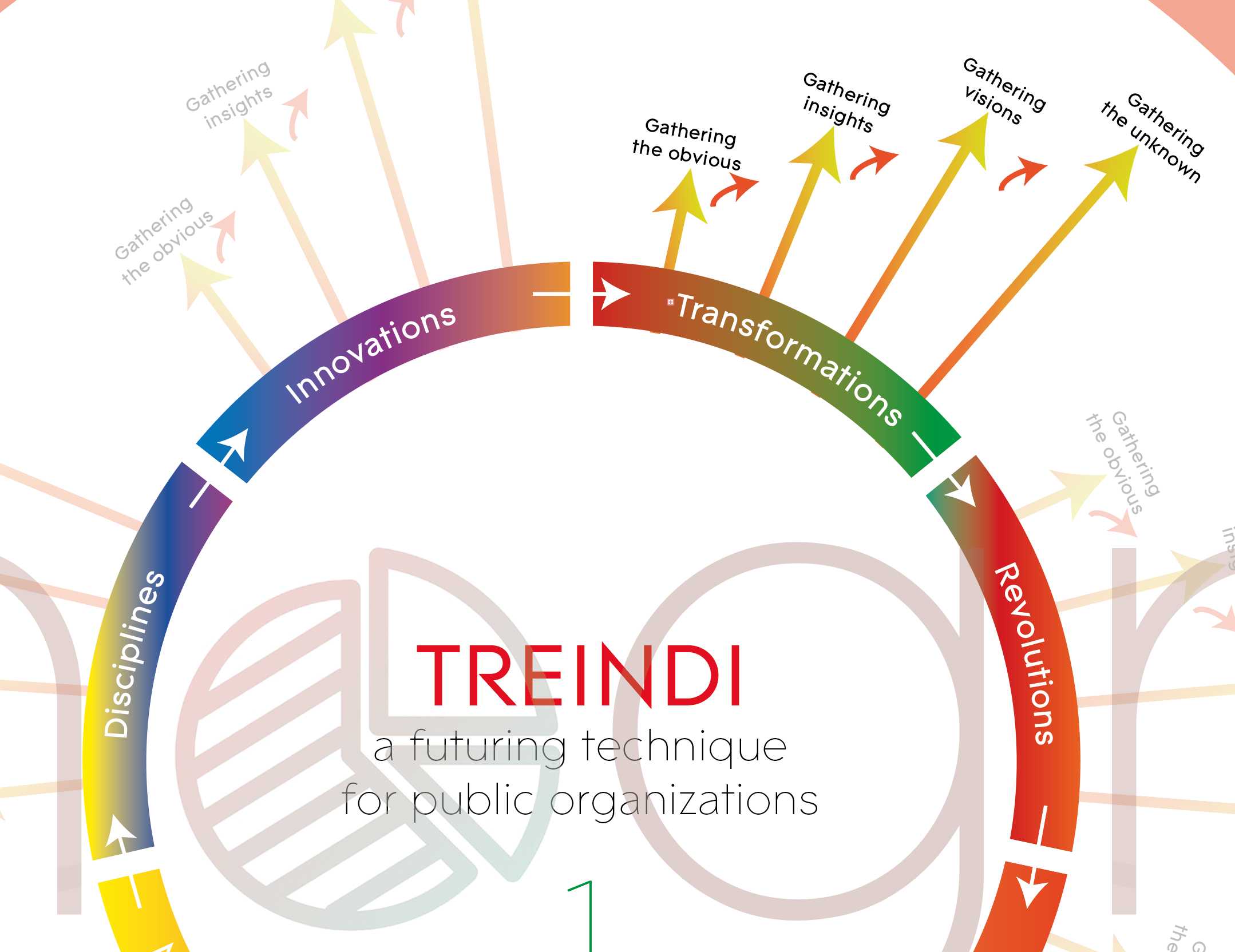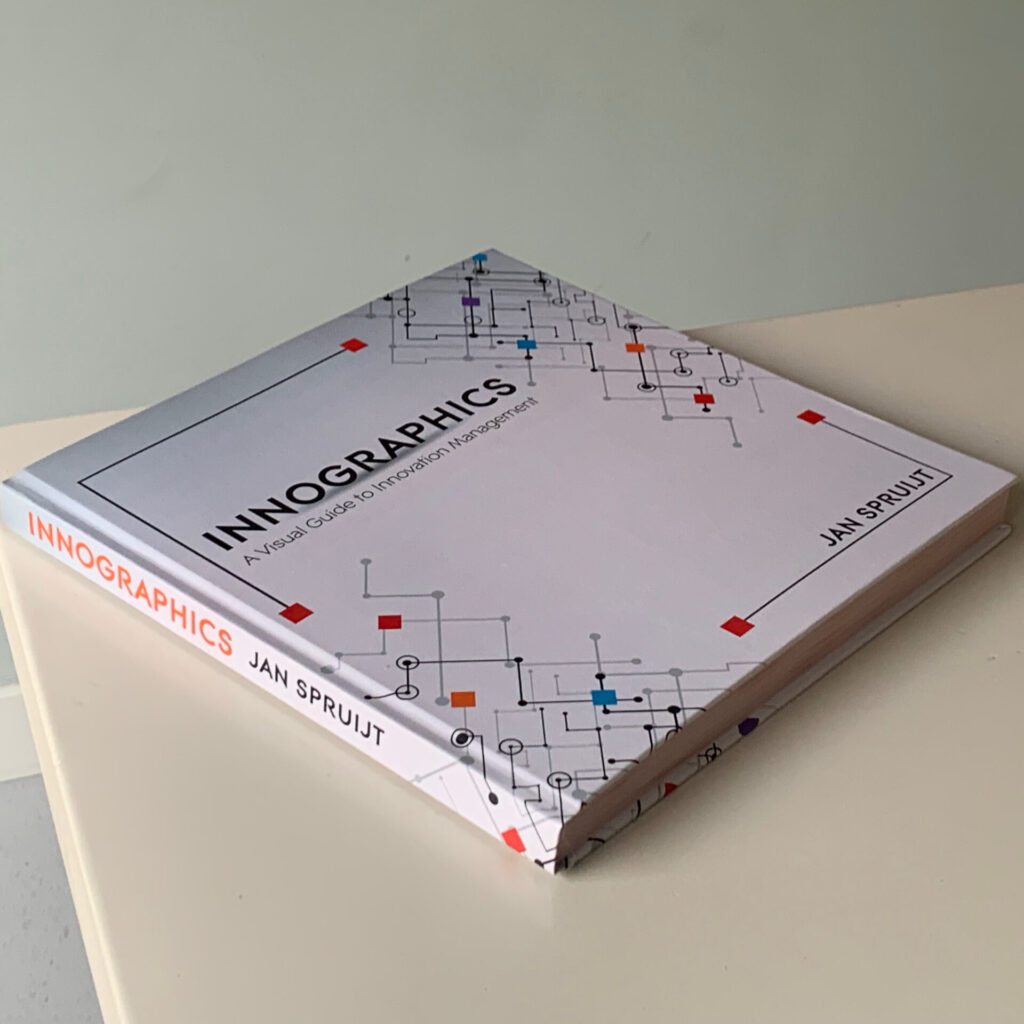a futuring technique for public organizations
Still a holy grail in market research: the DESTEP – STEEPLE – method. It is taught in almost every business-related course in the world and a very powerful tool to map trends for strategic purposes.
However, there are a few fatal flaws that may cause users of this method to miss out on important opportunities:
- It’s too broad to grasp the real pains and gains of customers and clients as well – and as such may result in insights for the whole market rather than insights for your users specifically.
- It’s supposedly a desk research method, missing out on many ‘odd’ opinions and visions that may actually change your market sooner than you think.
- It’s based on ‘old-world-thinking’ by looking into economies, demographics and technologies, rather than shifting paradigms, sociographics and new business models that may or may not be digitally enabled.

This infographic is part of the book Innographics: A Visual Guide to Innovation Management
Download a 32-page preview for free
Including 2 infographics, 2 chapters and an overview of 28 innographics.
☑ I agree with opting in for the newsletter, our terms and privacy policy.

Especially for the aim of doing strategic research within public institutes, such as (semi-)governmental organizations, non-govermental organization, education institutions and – yes, with their bureaucracy they function as public institutions as well – institutionalized corporations, the DESTEP-method doesn’t work. It is therefore that I came up and validated the TREINDI-approach: a futuring technique for public organizations.
It consists of 7 categories that need to be addressed, in the right order, when doing strategic research for radically new or high-impact strategic changes. Examples may be:
- New education programmes
- New schools or universities
- New public-private partnerships
- New government-funded organizations or (temporary) collaborative ecosystems
- New policy
- New (innovation, economic or SDG) roadmaps
When following these 7 categories, it creates a waterfall of ideas that may then be plotted in framework for further analysis.
7 Categories of TREINDI
Ask yourself these questions when looking this magnificent 7.
- Transformations: What technology-driven discontinuities are taking place? What challenges and transformations is the world facing?
- Revolutions: In what way do they create revolutions in society? How do people, cultures and demographies react?
- Ecosystems: How does the ecosystem in which we operate change? How does it effect the (economic) environment we’re in?
- Institutions: How is the foundation of our institiution impacted? How does it change the role of our department in society?
- Nature of Work: In what way will that change the nature of work? How will we redesign or reinvent our structures?
- Disciplines: What are the effects for our own discipline? How will the scope of our line of work change?
- Innovation: What are the most recent (digital) innovations that impact us? What new tools, products, services and business models are around?
When you understand the different phenomena, follow the following 4 steps to conclude your research
1. Plan your Research
First of all, make sure to take 2-3 months to complete your research: assuming you have about 8 hours/week available I would advise to do the following:
- Gather the obvious: ask all of your colleagues to send you as much relevant papers, publications, links, videos, talks, and so on. Drop them in a folder. Moreover, dig up your own files and drop them in a folder as well. Don’t read everything now, but scan each article on validity and save some highlights for your expert interviews.
- Gather insights: this consists of ‘user research’ and ‘conference crashing’:
- User Research: set out on a path the find out what the users wants using Design Thinking methods. Speak to at least a 100 users.
- Conference crashing: visit 2 or 3 high-end conferences on your topic. Pick the conferences carefully: choose the ones which have lots of paralel tracks, so you can sneak in and out of tens of sessions in a day to get as much deep knowledge as you need. Write down everything you remember and take dozens of pictures.
- Gather visions: reach out to experts in the field and prepare excellent interviews for them. Use LinkedIn or your own network to find them and send your request carefully, knowing that you’ll take up valuable time from them, but recognising that your public mission might also be of importance to them.
- Gather the unknown: organisatie at least 3 different workshops with clients and colleagues to further elaborate on your fist findings. Use other futuring techniques for that.
2. Plot your Results
Now, this is the most work. Go through all of your material and step by step plot them in the circle. You’ll be able to use thicker lines for trends that may have more impact on your organizations, and you may plot them closer to the ‘Zone of Impact’ if you think they will be of relevance sooner than others.
3. Categorize the Results
Now, start categorizing the results by theme. Discuss this with a steering group and colleagues and try to find 4 or 5 different categories that summarize opportunities for your organization. Color them by category (don’t rearrange them) and try to draw starting points as well, depicting the current state of your business and making the gap clear.
4. Design New Business Models
This is a whole tool in itself, but I’m supposing for now you’re familiar with that. Draw a new business model for each of the different categories. Discuss it with colleagues and redesign them until you’re happy about. Start some pilots. Draw a final report for the archives.
Congrats, you’ve made it, that’s kind of treindi!